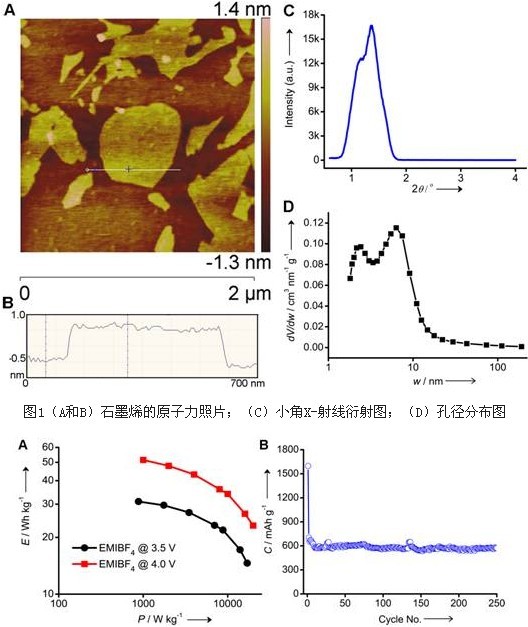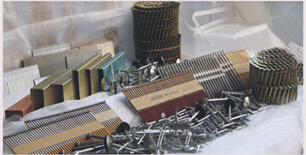Progress in macroscopic preparation of porous graphene
Recently, the Ma Yanwei group of the Institute of Electrical Engineering of the Chinese Academy of Sciences has made significant progress in the macro-preparation of porous graphene. By using a new method-combustion quenching technology, the magnesium metal strip is ignited in carbon dioxide gas and quenched in situ in ammonium bicarbonate solution. A graphene material having a high quality and containing a large amount of mesoporous structure was successfully prepared.
Under the new method, 25 g of magnesium can produce about 1 g of graphene. The graphene has a mesoporous order, a specific surface area of ​​up to 756 m 2 /g, a mesoporous size distribution of about 2 nm and 7 nm, and a pore volume of 1.5 cm 3 /g ( FIG. 1 ). The mesoporous ordered graphene materials are used in supercapacitors and lithium ion batteries respectively (Fig. 2). The energy density of graphene-based symmetric supercapacitors under ionic liquid electrolyte is as high as 51.5Wh/kg, corresponding power. The density is 1 kW/kg; when the power density is 20 kW/kg, the energy density is maintained at 23.1 Wh/kg. The lithium ion battery anode material was maintained at 570 mAh/g after circulating for 250 weeks at a current density of 0.2 A/g, and the above values ​​were all based on the electrode material.
The method is a template-free self-grown mesoporous ordered structure graphene, which is simple in operation, low in cost, environmentally friendly, and has high quality and high yield of graphene, and has applied for a national invention patent. Related results were published in the June issue of Chemistry and Sustainability, Energy and Materials (ChemSusChem, 2013, 6, 1084, IF=6.8).
This work was supported by the Beijing Municipal Science and Technology Commission and the Chinese Academy of Sciences project.

Collected nails are nails that are in someway attached to each other in a strip or coil. The most popular collation are plastic, wire weld, and paper for stick nails. Coil nails are typically either wired weld or plastic coated strip. Collected nails are bands of nails used in nail guns. They are used to quickly construct wooden framing without having to manually hammering in each nai.
Air driven nails are very effective. I've usd hundreds of boxes of them and never had on fail yet.
The surface treatment of them: hot dipped galvanized or electro galvanized. Packing : in cartons.

Collated Nail,Collated Coil Nails,Galvanized Collated Nails,Collated Strip Nail
Huanghua Yuanfeng Hardware Products Co.,Ltd , http://www.hhyuanfeng.com